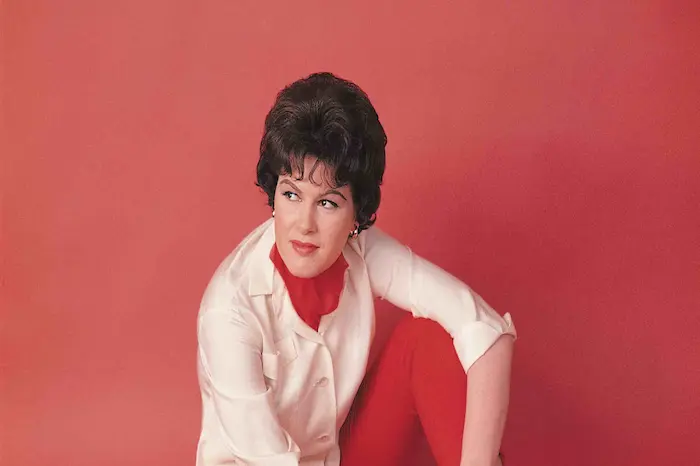In the world of country music, few names evoke as much reverence and admiration as Patsy Cline. Her journey to becoming the first solo female artist inducted into the Country Music Hall of Fame is a testament to her talent, resilience, and enduring legacy. This article delves into Patsy Cline’s life, her contributions to country music, and the significance of her groundbreaking induction.
I. Early Life and Beginnings
1. Virginia Roots
Patsy Cline was born Virginia Patterson Hensley on September 8, 1932, in Winchester, Virginia. From a young age, her love for music was evident. She grew up listening to the Grand Ole Opry and was particularly influenced by the voices of such stars as Loretta Lynn and Kitty Wells.
2. A Passion for Singing
By the time she was a teenager, Patsy was performing in local talent shows and radio programs. Her powerful voice and emotional delivery quickly caught the attention of local audiences. She adopted the stage name “Patsy” after a middle name given by her manager, Bill Peer, and “Cline” from her first marriage to Gerald Cline.
II. Early Career Struggles
1. Breaking into the Industry
Patsy’s early career was marked by numerous challenges. She signed her first recording contract with Four Star Records in 1954, but the label imposed restrictions that limited her creative control. Her initial recordings, though well-received, did not achieve commercial success.
2. Persistence and Breakthrough
Despite these setbacks, Patsy’s determination never wavered. Her big break came in 1957 when she appeared on the nationally televised talent show “Arthur Godfrey’s Talent Scouts.” Her rendition of “Walkin’ After Midnight” became an instant hit, propelling her into the national spotlight.
III. Rise to Stardom
1. The Evolution of a Legend
With the success of “Walkin’ After Midnight,” Patsy’s career gained momentum. She moved to Decca Records in 1960, a decision that would prove pivotal. Under the guidance of producer Owen Bradley, her sound evolved, blending traditional country with pop elements. This crossover appeal helped her reach a broader audience.
2. Iconic Hits
During the early 1960s, Patsy released a string of hits that would become classics. Songs like “I Fall to Pieces,” “Crazy,” and “She’s Got You” showcased her vocal prowess and emotional depth. Her ability to convey heartache and longing resonated with listeners, earning her a devoted fan base.
IV. Personal Life and Challenges
1. Triumphs and Trials
While Patsy’s professional life was soaring, her personal life was filled with ups and downs. She faced financial struggles and health issues, including a serious car accident in 1961 that nearly ended her career. However, her resilience and determination saw her return to the stage, stronger than ever.
2. Family and Relationships
Patsy’s personal relationships also played a significant role in her life. Her marriage to Charlie Dick in 1957 brought stability, but it was not without its challenges. Despite the ups and downs, Charlie remained a steadfast supporter of her career until her untimely death.
V. Legacy and Influence
1. Tragic End
Patsy Cline’s life was tragically cut short on March 5, 1963, when she died in a plane crash at the age of 30. Her sudden death shocked the music world and left a void in the hearts of her fans. However, her legacy was just beginning to take shape.
2. Posthumous Recognition
In the years following her death, Patsy’s influence continued to grow. Her recordings remained popular, and her music inspired countless artists across genres. Her posthumous album releases and compilations introduced her to new generations of fans.
VI. Country Music Hall of Fame Induction
1. Breaking Barriers
In 1973, a decade after her death, Patsy Cline made history as the first solo female artist inducted into the Country Music Hall of Fame. This milestone was a recognition of her immense contributions to country music and her role in paving the way for future female artists.
2. Significance of the Induction
Patsy’s induction into the Hall of Fame was more than a personal achievement; it was a testament to the changing landscape of country music. Her success demonstrated that female artists could achieve the same level of acclaim and respect as their male counterparts.
VII. Impact on Future Generations
1. Inspiring Female Artists
Patsy Cline’s career and her historic induction have inspired countless female artists to pursue their dreams in the country music industry. Stars like Loretta Lynn, Dolly Parton, and Reba McEntire have cited Patsy as a significant influence on their own careers.
2. Continued Relevance
Even today, Patsy’s music remains relevant. Her songs are covered by contemporary artists, and her recordings continue to sell. Her timeless voice and the emotional depth of her performances ensure that her legacy endures.
VIII. Honoring Patsy Cline
1. Tributes and Memorials
In the years since her death, numerous tributes and memorials have been established to honor Patsy Cline. The Patsy Cline Museum in Nashville offers fans a glimpse into her life and career. Her hometown of Winchester, Virginia, also celebrates her legacy with annual events and a dedicated Patsy Cline Historic House.
2. Cultural Impact
Patsy’s impact extends beyond music. She has been the subject of films, documentaries, and books, each exploring different facets of her life and career. Her story continues to captivate audiences, ensuring that her memory lives on.
See Also: Exploring Expressionism in Music: Its Origins and Influence
IX. Conclusion
Patsy Cline’s induction into the Country Music Hall of Fame as the first solo female artist was a landmark achievement in the history of country music. Her journey from a small-town girl in Virginia to a trailblazing legend is a testament to her talent, perseverance, and enduring legacy. Patsy Cline’s music continues to touch the hearts of listeners around the world, and her influence on the genre is immeasurable. She remains an icon, a pioneer, and an inspiration to all who follow in her footsteps.

